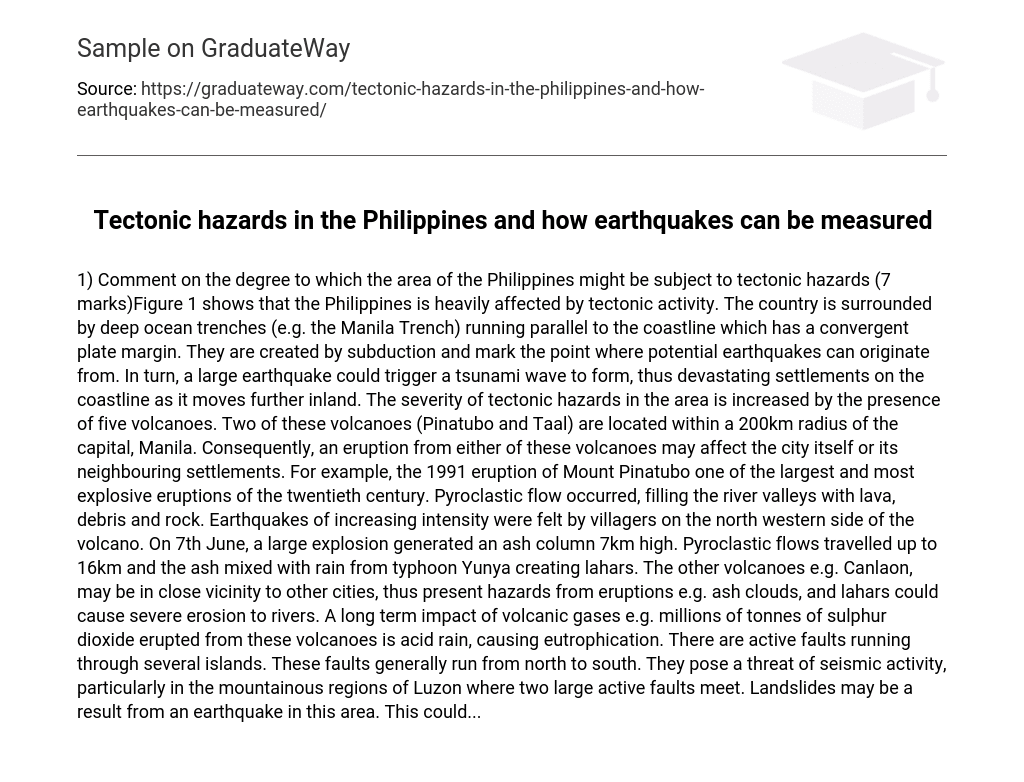1) Comment on the degree to which the area of the Philippines might be subject to tectonic hazards (7 marks)Figure 1 shows that the Philippines is heavily affected by tectonic activity. The country is surrounded by deep ocean trenches (e.g. the Manila Trench) running parallel to the coastline which has a convergent plate margin. They are created by subduction and mark the point where potential earthquakes can originate from.
In turn, a large earthquake could trigger a tsunami wave to form, thus devastating settlements on the coastline as it moves further inland. The severity of tectonic hazards in the area is increased by the presence of five volcanoes. Two of these volcanoes (Pinatubo and Taal) are located within a 200km radius of the capital, Manila. Consequently, an eruption from either of these volcanoes may affect the city itself or its neighbouring settlements. For example, the 1991 eruption of Mount Pinatubo one of the largest and most explosive eruptions of the twentieth century. Pyroclastic flow occurred, filling the river valleys with lava, debris and rock.
Earthquakes of increasing intensity were felt by villagers on the north western side of the volcano. On 7th June, a large explosion generated an ash column 7km high. Pyroclastic flows travelled up to 16km and the ash mixed with rain from typhoon Yunya creating lahars. The other volcanoes e.g. Canlaon, may be in close vicinity to other cities, thus present hazards from eruptions e.g. ash clouds, and lahars could cause severe erosion to rivers.
A long term impact of volcanic gases e.g. millions of tonnes of sulphur dioxide erupted from these volcanoes is acid rain, causing eutrophication. There are active faults running through several islands. These faults generally run from north to south. They pose a threat of seismic activity, particularly in the mountainous regions of Luzon where two large active faults meet. Landslides may be a result from an earthquake in this area.
This could…





